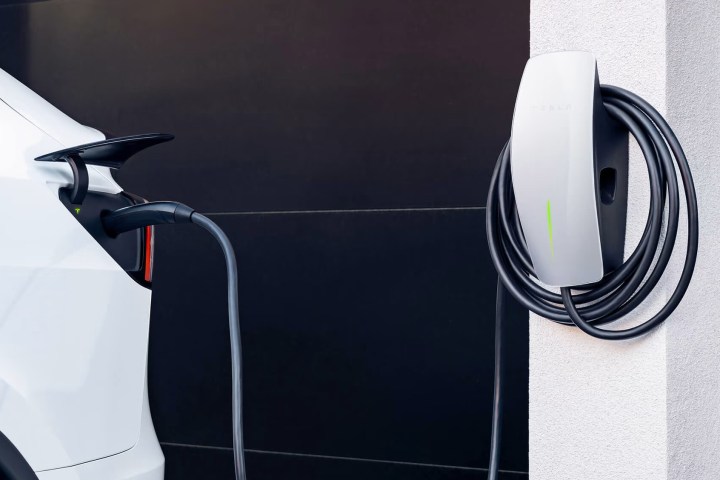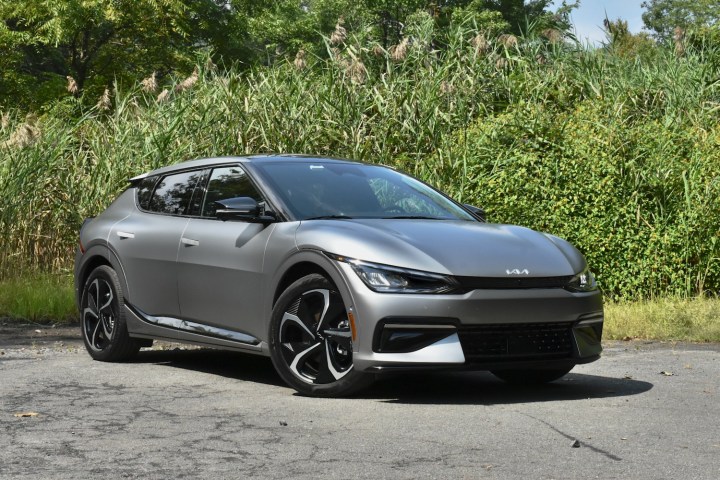
It’s finally happening. Up until now, we’ve had a few different connector types on electric vehicles, but everyone is finally moving toward one connector. The NACS connector, invented by Tesla, is set to become the dominant (or only) charging connector on electric vehicles in North America.
But the actual connector is only part of the story if we want better EV charging. It’s an important one, sure, but to create a truly convenient charging experience, software is as important as hardware.
What is Plug & Charge
These days, unless you have a Tesla, charging your electric car isn’t as convenient as it should be. Most of the time, you’ll pull up to a charging station, plug in the charging cable, mess around with the charging station’s app, try and use tap-and-pay, and hope everything works well enough for your car to charge.

But things don’t have to be so difficult — and in some cases, they aren’t. It’s 2023, and technology should be able to work together more seamlessly. There’s actually a standard to make this happen. Plug & Charge (also known as ISO 15118) is built to securely enable a handshake between the car and the charging station, identifying the user and validating payment, all without you having to do anything. All you’ll need to do is plug the charging cable into the car, and your car will handle the rest.
The Tesla effect
Of course, this kind of tech probably sounds familiar. Most Teslas have worked this way from the beginning. Unfortunately, Tesla isn’t using the ISO 15118 spec exactly, and is instead using its own propriety automatic charging tech to allow cars and charging stations to communicate with each other. But Tesla did include possible use of ISO 15118 in the NACS standard, so car companies that adopt the new connector could also implement Plug & Charge technology too, if they so choose.
Tesla isn’t actually the only one to implement automatic charging tech, but it is the only car company to widely adopt it as a default. Ford EV drivers can enable Plug & Charge by diving deep into the settings of the FordPass app, and when they do, it’ll only work with certain charging stations. So convenient.
Not so fast
It’s important to note that Plug & Charge isn’t actually required in the switch to NACS — it’s included as an option in the standard, but that doesn’t mean that car manufacturers have to enable it. NACS itself is just a connector — the tech under the hood is separate.

“The transition to NACS shouldn’t impact the adoption of Plug & Charge,” said an Electrify America representative in an email to Digital Trends. “NACS is simply the connector, and the underlying communication is largely unchanged.”
Car companies actually could have adopted Plug & Charge in their Combine Charging System (CCS) electric vehicles, but for the most part, they didn’t. And, there’s not necessarily any indication that will change with the move to NACS, either.
“A vehicle must be built from the factory with ISO 15118 to support Plug & Charge,” continued Electrify America. “Many of the new vehicles on the market have this technology built in so the adoption will continue to increase over time, but at this time, many of the EVs on the road were built without it.”
But there is still some hope. Tesla’s charging stations have long been associated with simple, convenient charging, and soon non-Tesla cars will be able to charge at those stations en masse. Tesla Superchargers are so deeply based on Plug & Charge that they don’t even have payment terminals built into them. You’ll set up a payment method in the Tesla app and just use Plug & Charge to charge after that.

It’s not just up to car manufacturers to implement Plug & Charge — it’s also up to charging networks. Clearly, Tesla already has the tech nailed down, but thankfully, some others do too. Electrify America adopted the tech in 2020 (for cars that support it), however, the likes of ChargePoint aren’t on board just yet.
The downsides
Plug & Charge isn’t necessarily the perfect charging standard that some might hope, and there are reasons why ChargePoint, for example, has yet to adopt the standard. ChargePoint argues that Plug & Charge unnecessarily inserts a middleman into the payment process of EV charging, introducing unnecessary security risks. Additionally, ChargePoint says that Plug & Charge gives too much power to utilities to set pricing, instead of the operators of the chargers, who, for example, might be business owners who want to offer free charging to employees. We reached out the ChargePoint for comment and will update this article when we hear back.
Regardless of the downsides, however, it’s clear that we need a better, more convenient charging solution to be widely adopted, and there aren’t really many alternatives. Charging has the potential to be way more convenient than pumping gas ever has been, and that comes entirely down to how payments are handled.
Editors' Recommendations
- Tesla to begin production on new, more affordable models
- Tech giant reveals nice price for new EV to take on Tesla
- Here’s how Ford will give EV customers Tesla Supercharger access
- Tesla video shows off Cybertruck’s Basecamp tent attachment
- Ford and GM EV drivers will be able to charge at Tesla Superchargers in February


